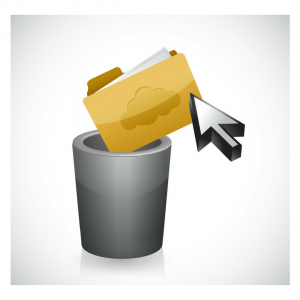It’s Time to Rethink Your Marketing Strategies under GDPR
If you’re a marketer or a business owner, by now you must be aware of GDPR (The General Data Protection Regulation). If you aren’t, you need to check out our blog posts right away. Here’s what you might have missed so far;
6 Steps to Prepare Your Business for GDPR
GDPR will likely affect the way marketers approach consumers and how businesses seek, hold and process the personal data of EU citizens.
The new regulation isn’t intended to ruin marketing for businesses. Think of it as a step in the right direction, good marketers can just continue working in a way that puts their consumer’s interests at the forefront of their mind. Think of it as a challenge, as a marketer, you will have to work harder to grasp the attention and communicate with consumers – you’ll probably strengthen your skill set and increase your understanding of what your consumer’s needs are.
You’re just going to have to be more creative, think outside the box and come up with new innovate marketing strategies. Personally, I only see this as positive.
How is Marketing Going to Change?
Some of you may have been putting your own interests ahead of your consumers, possibly using tactics that have a moral question mark next to them. If you’ve ever used strategies like cold emailing, buying lists or spamming – it’s time for big change.
Not only do these tactics not have your consumers interests in mind, they aren’t particularly affective, and they poorly label your brand.
It’s time to change how you reach your audience, and to embrace that from the 25th May 2018, consumers are in the driver’s seat.
It’s a new age of marketing – which could probably cause you temporary challenges. Review how you build your data base, data base management, and how you collect personal information. GDPR hasn’t set unrealistic principles – its just about adapting, and here’s how you can do it;
Marketer’s 3 Step Guide to Handling Personal Information
To help you, as a marketer, adapt your current strategies, here our 3 step guide to assist being GDPR compliant!
Step 1 – How You Collect Your Data
 First, just be transparent to your audience. Make it obvious what the data you intend to collect will be used for. For example, if you want to collect information about your client’s interests, tell them why! Is it so you can cater offers towards their own profile? Is it so you can direct them to products which will be most appealing to them?
First, just be transparent to your audience. Make it obvious what the data you intend to collect will be used for. For example, if you want to collect information about your client’s interests, tell them why! Is it so you can cater offers towards their own profile? Is it so you can direct them to products which will be most appealing to them?
The consumer has the right to consent or to decline. If they choose to decline to your newsletter, for example, you can’t add their email to your database.
They have the right to withdraw their consent; perhaps, review your disclosure and make sure it’s clear they can decline further communications.
If you want to use your consumer’s data for a new purpose, perhaps you’re looking to do a new campaign based on consumer interests, you need to let everyone know of the new purpose their data is being used for.
If you’re honest, you’ve got nothing to worry about.
Minimise your data – you’ve probably got a lot of data stored that serves no purpose. If you collect data which is believed to be unnecessary or too much, it will be a breach of GDPR. Marketers should see this as a positive thing, you can focus on the data you need rather than getting distracted by irrelevant information.
Step 2 – How You Process Your Data
 Limit the use of your data. If you want to share or transfer your data to another company, make sure you get the consent of the consumer. If you send an email and receive no response, you can’t assume this is consent. Try to get hold of them, perhaps send another email or try to reach them by telephone. Marketers can only collect and store data for legitimate reasons.
Limit the use of your data. If you want to share or transfer your data to another company, make sure you get the consent of the consumer. If you send an email and receive no response, you can’t assume this is consent. Try to get hold of them, perhaps send another email or try to reach them by telephone. Marketers can only collect and store data for legitimate reasons.
Make sure your data is secure – a data breach will likely cause a lot of complications. It may be beneficial for you to encrypt the data, consider pseudonymisation, a procedure where fields within a data record are replaced with artificial identifiers (pseudonym / fictitious name) or anonymization, removing potential identifiable information from your data (to keep your consumer’s identity unknown).
Make sure you’re always on hand to correct any personal information. It’s the consumers right to request, at any time, for their data to be corrected or updated.
It’s crucial to cover your own, and the businesses, back. Keep records to prove you’re complying with GDPR, for example, keep your consumer’s consent form to be sent weekly updates.
Step 3 – How to Handle Relationships Coming to an End
If a consumer is no longer using your services, you may not be entitled to hold on to their data. Either produce or amend your data retention policy so it clearly discloses how long you will retain personal information and why you need to hold on to it for a certain amount of time. For example, if a consumer doesn’t want to use your services but you’ve got data about their interests and you want to hold it for analysis – let your consumers know how long you intend to take.
But if they request for it to be deleted, you need to comply. Confirm the deletion, perhaps in an email.
Welcome the Change!
Marketers might be feeling a bit miffed at the change, it may add to your work load at the beginning, but once you’re in the swing of things you’ll hardly notice a difference. I think it’s important to highlight the benefits of GDPR for marketers …
1. You’ll be giving consumers the respect they deserve; you’re giving your customers value which I’m sure they’ll be thankful for.
2. You’ve got a chance to show your brand’s honesty – create a solid relationship with individuals, they’ll feel more in control of their own data.
3. Rise to the competition – you’ll become a better marketer – consumers won’t just be ‘given’ to you, you’ll need to work hard to create a loyal following.
Legitimate Interests
There might be occasions when you don’t need to consent to collect and process consumer’s personal information. There are legal justifications that marketers can use to process customer data. This is a big topic – one that it’s essential you understand. A blog post regarding legitimate interests will be coming shortly!
